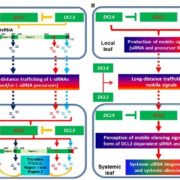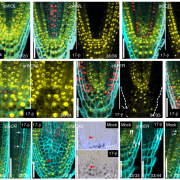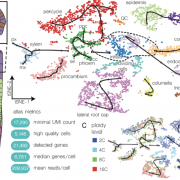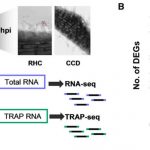Metabolic labeling of RNAs uncovers hidden features and dynamics of the Arabidopsis transcriptome (Plant Cell)
The ability to directly sequence RNAs (RNA-seq) has revolutionized our understanding of gene expression, but it can miss or underestimate short-lived RNAs. Several methods have been developed to identify newly-synthesized mRNAs to provide a snapshot of transcription as it happens. Szabo present Neu-seq, an in vivo pulse-labeling method using a non-toxic uridine analog (5-EU; 5-ethynyl uridine) followed by biotin purification that detects neosynthesized transcripts, short-lived transcripts, and processing intermediates (e.g., incompletely-spliced transcripts). The method can also be used to estimate rates of RNA decay. The authors address the benefits of this method as compared to other similar methods, for example the use of transcriptional inhibitors, and they also observe that the method is suitable for detection of plastid transcription. As one reviewer observed, “This method will likely have a large impact on the field of nuclear/organellar RNA metabolism, and the subject is very timely.” (Summary by Mary Williams) Plant Cell 10.1105/tpc.19.00214
[altmetric doi=”10.1105/tpc.19.00214″ details=”right” float=”right”]










